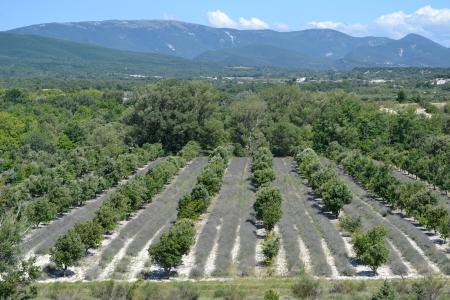
Objective:
CulturTruf was financed by FranceAgriMer (French Agriculture Ministry) from 2016 to 2019. The objective of this project is to understand how water balance, truffle production, and soil truffle DNA evolve in different orchards of T. melanosporum, T. aestivum, T. aestivum var. uncinatum according to technical itineraries adapted to different climates. The aim is to optimize water management in truffle plantations by coupling basic and applied research approaches. In this sense, this project fully responds to a strong demand from the sector to adapt truffle production to climate change.
Context:
During the 20th century, French truffle production declined sharply. It is now accepted that societal factors such as land-use change and environment anthropization have contributed to this decline by decreasing the availability of suitable sites for truffle production. Thus, nowadays, the production of black truffle (T. melanosporum) comes almost exclusively from truffle orchards in which humans strive to reduce the impact of environmental constraints. Among these constraints, it has been shown that summer water deficit is one of the main factors explaining interannual production variations.
Contacts:
Claude MURAT, claude.murat@inra.fr
Further information:
https://www.nature.com/articles/s41598-019-49602-2